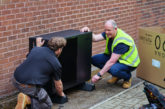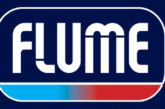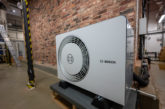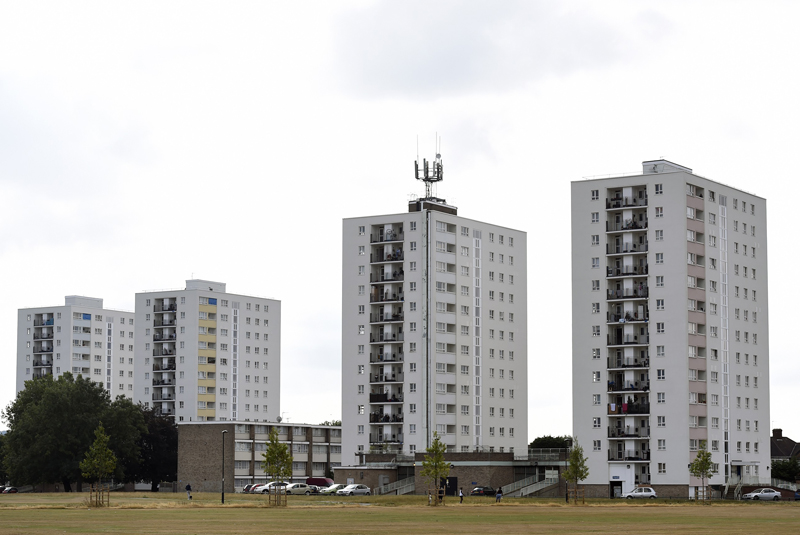
As part of a £5.8 million regeneration project to enhance heating efficiency and slash bills by 50%, four 1960s tower blocks in North London have replaced their outdated electric underfloor heating systems with next-generation radiators from QRL Radiator Group – all matched with renewable heat sources.
The four identical residential tower blocks were refurbished through a joint initiative between the London Borough of Enfield, renewable energy specialist Ice Energy and energy efficiency consultancy AgilityEco. The Exeter Road Retrofit Project saw all four blocks undergo a series of extensive efficiency upgrades in a bid to tackle fuel poverty, raise heating standards and improve quality of life in the community.
In addition to installing external wall insulation and double glazing, the renovation work included a complete overhaul of each property’s old, inefficient electric underfloor heating (UFH) system. The buildings are not connected to the mains gas grid, so Ice Energy designed a ground source heat pump (GSHP) solution, which uses natural energy stored underground as a renewable heat source. The team then specified QRL hi-lo Compact panel radiators to work in conjunction with the GSHPs, as their design makes them the ideal partner for renewables (which run at lower temperatures than traditional heat sources).
Andrew Sheldon, Founder and Managing Director at Ice Energy, explains: “These off-grid tower blocks were built more than half a century ago, and very little had been done to them since – so they were suffering from extremely poor energy efficiency and thermal performance. The failing electric UFH systems were permanently set to run at 27°C, and this temperature could not be altered. This, combined with the buildings’ high levels of heat loss, meant residents were forced to use electric storage heaters, which led to higher than average energy bills in what is already an economically disadvantaged area.”
“As they make use of natural resources and don’t require connection to the gas grid, GSHPs were the ideal antidote to high running costs and wasted energy – but pairing them with the right heat emitters was absolutely crucial to ensuring optimum performance and efficiency. The technical make-up of QRL’s hi-lo Compact radiators means they are designed to deliver the best efficiency and heat transfer even at lower Delta Ts, so they complement renewable heat sources perfectly.”
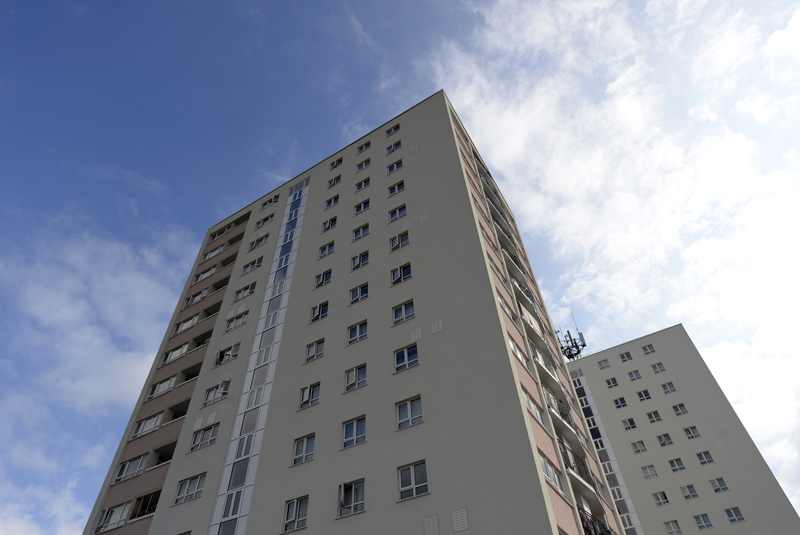
Enfield-based mechanical and electrical services contractor Oakray Limited was called in to install the new internal GSHP units, along with around 900 QRL hi-lo Compacts (an average of five in each flat).
Steve Selves, Senior Contract Manager at Oakray Limited, says: “The GSHP solution at Exeter Road is the first of its kind in England, with a large communal ground loop laid 250 metres below ground level by the Ice Energy team. This extracts the natural solar energy stored in the parkland surrounding the tower blocks, and feeds it into individual GSHP units, which we sited inside each flat’s airing cupboard. This energy is then used to heat the properties’ water and radiators.
“We found both the QRL hi-lo Compact panels and the Crystal towel warmers straightforward to fit, and were impressed with how flexible the QRL team was. The whole project took around five months from start to finish. The system is now providing efficient, reliable and fully adjustable heating and hot water – saving residents hundreds of pounds in the process.”
Jamie Warren, Specification Manager at QRL Radiator Group, adds: “The Exeter Road project showcases just how important a role emitters have to play in wider heating system performance. Choosing a super-efficient heat source like a GSHP is a smart move, but matching it with inefficient emitters can all but cancel out the benefits – reducing efficiency across the whole system. As experts in renewables, Ice Energy was fully switched on to this, which is exactly why the team specified our hi-lo Compact radiators.”










